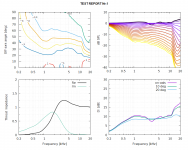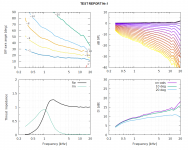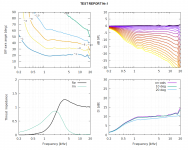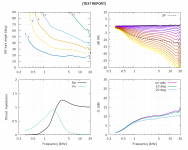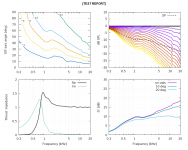Is this quote the reason you liked that paper?
Well I certainly won't argue with those statements.
Thanks for reviewing it and interpreting it for me in the context of loudspeaker imaging in rooms. Your response leads me to think it might be beneficial to take a modular approach to speakers based on what you said here:
I mean a literal modular approach. Multi-subs, Low-mid section 200Hz to 1,000Hz, then a separate mid-high section above 1,000Hz. The mid-high section could be swapped out based on listening material.
That different musical types might be preferred with different designs is something that I have said for a long time. The best way to have "both worlds" is not at all clear to me. I have only ever sought one side of this coin and haven't given much thought to how to do both.
I have said for a long time.
I thought so but wasn't sure if I remembered correctly. That reinforces the idea -- for me -- it might not be a bad idea to swap 1,000Hz up modules. Especially if one has varied music tastes. I like all music styles but if there's a good recording of a small group in a studio I'd like to be able to pop on a suitable waveguide.
Regarding the ITD paper, the thing I really like about science is that you can know something until it's proven wrong. Then you get to know something else. Although, it's more common that you know a refinement rather than a total repudiation of the accepted science to that point. The exception might be psychology. Those scientists have been reversing years of existing science (knowledge) because the original science (methodology) wasn't done right. I have tons of respect for them.
I wouldn't overstate 'forgiving', in the 200-1k region. It is relative, and the magnitude of what you can get away with has to be in perspective with the expectations of the system.
I like the wording. I never interpreted forgiving as synonymous with unimportant. How does it help? It gives you a sanity check before you build gigantic horns in your living room.
Alternatively, the JBL 305P mkIIs have a little switch on the back to adjust EQ for boundaries. Low cost and convenient. Meets the sanity check.
For the most part I have found that science gets more and more refined. Like gravity. Newton wasn't "wrong", its just that Einstein showed a more far reaching solution than Newton's. I think that this is generally the case, not that somebody screwed-up, it's just that others may have developed a broader understanding.
BTW I have come across this paper that states:
"[...] Some researchers suggest a down sloping character across the full or at least a part of the audio band. This seems to be largely motivated by listener preference [4],[5],[6],[7],[8],[9] while little attention has been paid to solving the problem of the ‘circle of confusion’. This refers a self-referenced system where existing recordings are used to evaluate the room sound [10],[13]."
This nicely sums up my view (expressed earlier) as well.
"[...] Some researchers suggest a down sloping character across the full or at least a part of the audio band. This seems to be largely motivated by listener preference [4],[5],[6],[7],[8],[9] while little attention has been paid to solving the problem of the ‘circle of confusion’. This refers a self-referenced system where existing recordings are used to evaluate the room sound [10],[13]."
This nicely sums up my view (expressed earlier) as well.
What's the correct way of calculating a spatial average of several SPL curves?
RMS average is standard practice.
FWIW, ANSI/CTA-2034-A defines the listening window as the power average (i.e. RMS average) of nine curves:
0°
±10° vertical
±10°, ±20°, ±30° horizontal
0°
±10° vertical
±10°, ±20°, ±30° horizontal
That would be simply 0° - 30° in the axisymmetric case, which is all I plan to do. Sounds reasonable and I can easily try slightly different subsets as well, e.g. leaving out the on-axis response. I have data each 5°.
Maybe I will shrink it to 5° - 20° for the start.
Maybe I will shrink it to 5° - 20° for the start.
Last edited:
Sounds good, although I'm not sure of the rationale behind omitting the axial response. The listening window (using the ANSI/CTA-2034-A definition) is nearly the same as the listening axis response (18°) with my speaker despite the slight axial ripple. The difference between the curves is like half a dB.
Well it's the least important one, yet it can distort the picture by artificial ripple due to the perfect symmetry of the device - I don't want the optimization to try to flatten this.
Fair enough, I just don't think it would make much difference really, especially with how little ripple most of your more recent designs have.
By the way, I was wondering whether you saw my post a few days ago (it was definitely overshadowed by adjacent ones).
By the way, I was wondering whether you saw my post a few days ago (it was definitely overshadowed by adjacent ones).
I did and I still wait for your another post saying you increased the tilt even more since then 🙂
- Home
- Loudspeakers
- Multi-Way
- Acoustic Horn Design – The Easy Way (Ath4)
